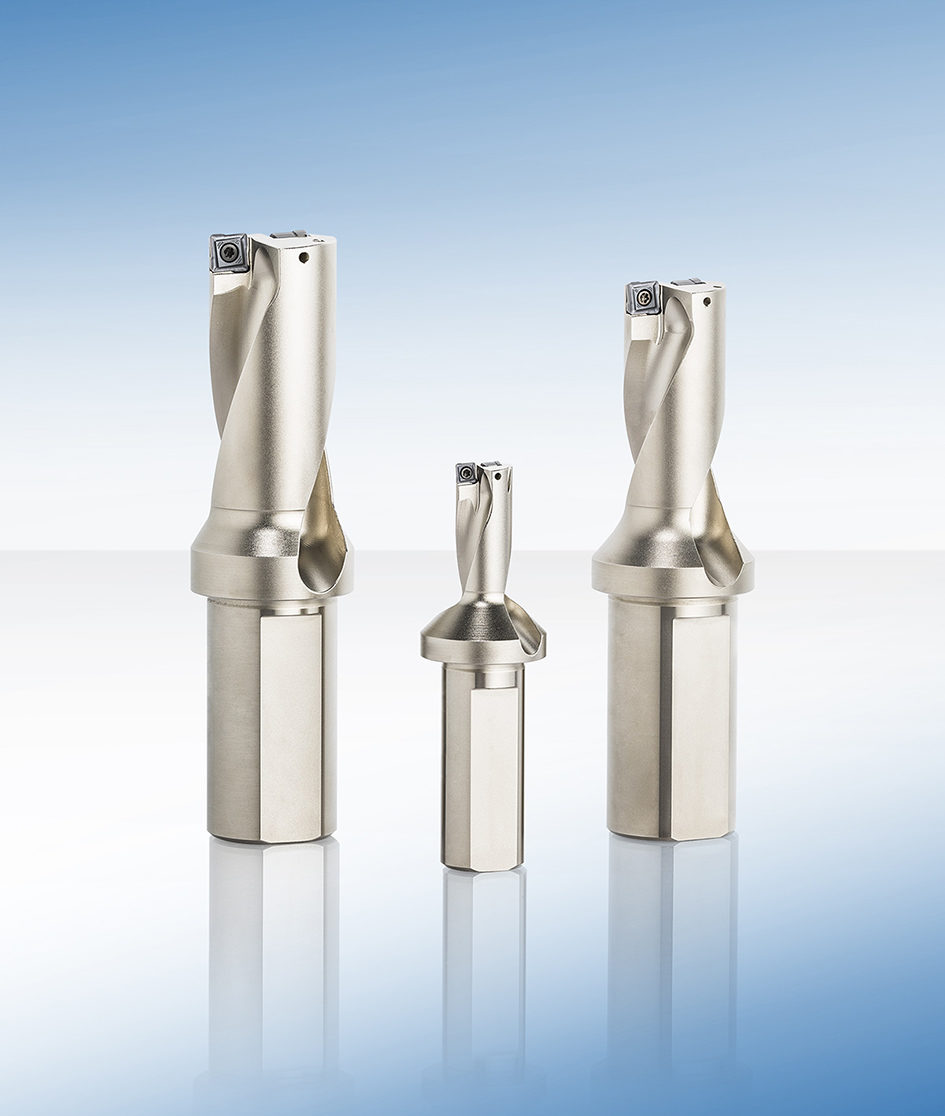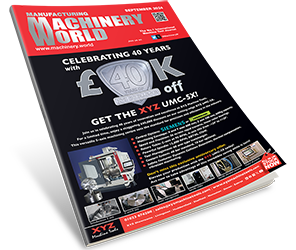As title sponsor of the WNT F2 powerboat team WNT (UK) has been applying its cutting tool knowledge and machines at its technical centres in the UK and Germany to create replacement, lightweight, components to reduce mass and increase speed. As the team prepares for the 2017 season thoughts turned to propulsive power and a redesign of the boats propeller. A combination of design, five-axis machining and the latest in cutting tool technology has produced a super-cavitating propeller to improve acceleration and top speed.
In F2 powerboat racing the propeller is crucial as it is the sole transmitter of power from the engine and if the design is wrong it can have serious impact on performance. For example, if the pitch is too small the boat will accelerate quickly, but not achieve the required top speed, and vice versa if the pitch is too large the boat will accelerate too slowly but will eventually go fast. The design of the propeller can also effect the handling of the boat by introducing rear lift for example. Teams will create individual propeller designs, within the parameters of the F2 rules, which state that it must have four blades and a 265 mm tip diameter. Beyond that team scan be inventive as far as pitch is concerned.
With the aim of reclaiming its British F2 Powerboat title in 2017 along with competing in selected rounds of the World Championship, Team WNT F2 decided to review its own propeller design that it could test over the winter close season. A new design with top secret pitch detail was created using Autodesk’s Inventor and its Coil Function which created a shape that would provide ideal forward motion when the propeller was in the water. The complex form produced then had to be machined from tool steel provided by team partner Böhler. Team WNT F2 Crew Chief Simon Watling explains the need for specialist steel: “The speed that the propeller rotates at creates terrific pressure and wear, so the material has to be tough and wear resistant. The technical experts at Böhler chose one of their W360 high grade tool steel as the most appropriate for this application. Developed for dies and punches it is ideal for applications where high hardness and toughness are required. I doubt they ever had F2 propellers in mind though.”
With the material specified it then came to the machining and with the complexity of the forms it was passed over to WNT’s technical centre in Kempten, which has a five-axis machining centre capability. The first operation was rough turning which reduced the original billet from 73 kg down to 30 kg. With the bulk of the weight removed the part was transferred to DMC650V three-axis machining centre for further pre-machining. To aid cutter access the part was clamped using WNT’s new magnetic plate along with its PNG zero point system. The external rough machining was completed using WNT’s HFC insert milling cutters with HCN5235 grade inserts. For the initial internal work a WNT C900 4xD Highfeed indexable insert drillll and WTX Feed solid carbide drills were used, with the main bore profile finished with WNT’s Digital Stick-System SpinTool. This digitally controlled fine boring system from WNT (UK) removes any ambiguity when adjusting fine boring heads, with a clear indication of the exact adjustment shown on the screen. Similar in size to a USB stick The digital stick display connects to the fine boring head via a contact surface, the head is then adjusted in the normal way using an Allen key, but where normally the movement has either to be measured using a dial gauge or reliance on the head’s vernier scale, the exact shift is now shown digitally on the stick and, as all of the electronics are contained within the stick and are powered by a single AAA battery, any imbalance in the head is removed. The units help control diameters down to 0.001mm increments on diameter.
With the external features roughed out and the bores complete, the propeller was transferred to WNT’s DMU75monoblock five-axis machining centre. The part was clamped upside down on a special clamping arbor allowing the finish machining of the external form to be started. This was achieved using a combination of WNT’s HFC insert milling system with HCN5235 grade carbide inserts running at typically 150m/min at a feed per tooth of 1.5 mm and a depth of cut of 0.4 mm. Other tools used included WNT’s 2011-11 milling system with XDKT grade HCN 5235 inserts, together with the WNT HSC-11 screw in head type milling cutter. In this case a head designed for aluminium machining was used to give the clearance required, due to the complex form of the propeller blade. Even with this situation tool life was 1.5 hours at cutting data of 140 m/min, 0.5 mm feed/tooth and 0.4 mm depth of cut. . The final finishing cuts were undertaken using WNT’s silverline ballnose cutter. “This was a very challenging job due to the extreme complexity of the blade form reducing tool clearance, but the WNT tools proved to be a good solution all round, even where we had to compromise due to clearances and use tools ideally suited to aluminium rather than tool steel,” says Andy Kuklinski, Technical Business Development Manager at WNT Kempten.







